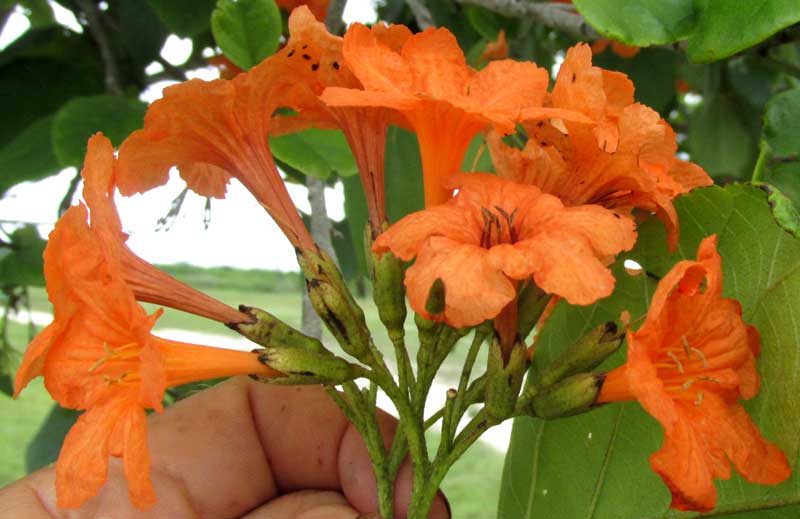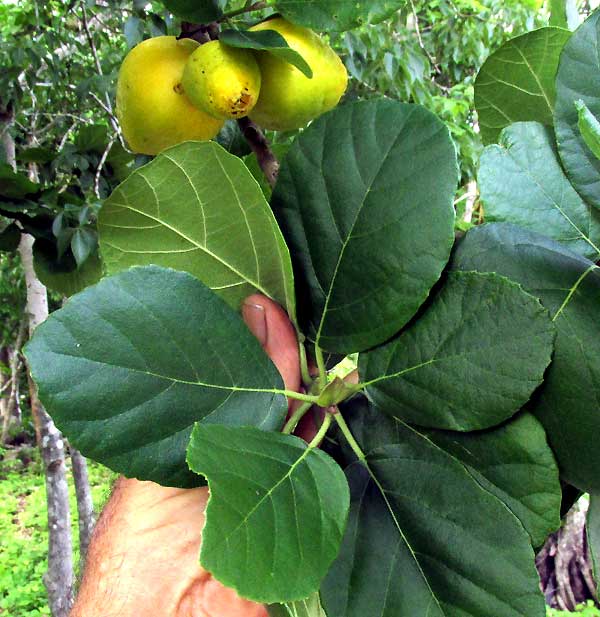Excerpts from Jim Conrad's
Naturalist Newsletter
Entry issued on June 7, 2019, from the forest just west of Tepakán; elev. ~9m (~30 ft), N21.053°, W89.052°; north-central Yucatán state, MÉXICO
SIRICOTE #2

A tree species often called Siricote is much planted in the Yucatan and elsewhere, because of its attractive, reddish-orange flowers. Its distinctive flowers, somewhat different from those shown above, can be admired on our Siricote page.
The above flowers are from a tree species very similar but definitely of a different species, often planted in people's yards and along roads in this area, and people here also call them Siricotes. In the picture atop this page, notice that the funnel-shaped corollas of this second Siricote species bear five rounded corolla lobes, while on the page describing the first Siricote the flowers' corollas have ten or so lobes. The first Siricote species is Cordia dodecandra. The second Siricote, more commonly planted in this area, is CORDIA SEBESTENA. Both species are native to southern Mexico, the Caribbean and south through much of Central America, and mostly turn up in coastal areas, though the first one, Cordia dodecandra, occurs in the dry thorn forests of northern Yucatan while this second one does not.
Though one Siricote of this second species was flowering, most of our locally planted Siricotes now at the beginning of the rainy season are bearing nothing but fruits. I read that the species can flower year round if watered, so maybe the single flowering tree benefits from water running off the road's asphalt. Below, you can see the locally planted Siricote's fruits among the leaves:

Leaves of this species are leathery with rough surfaces like sandpaper, like the other species, but tend to be a bit broader. Leaves of both trees can be used to scour pots and dishes. The fruits contain one large seed, as shown below:

Some local Maya have told me that the fruit is sweet and good to eat. The ones I've tasted are indeed somewhat sweet but also flavored like roses smell, and they're a bit soapy tasting. Traditionally the fruit has been used for various ailments, including to treat fevers.